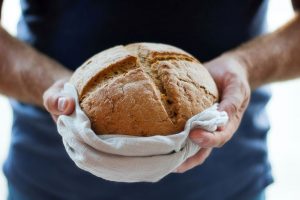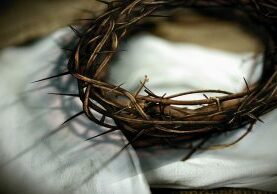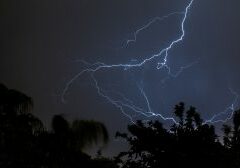The Sacramental Imagination
Chris+ Myers
 “The sacramental imagination, which affirms the goodness of creation, animates an iconic imagination that affirms the presence of the invisible in the visible—that lifts up the messiness of bodies to be more than biological machines.” —James K.A. Smith, Who’s Afraid of Postmodernism?
“The sacramental imagination, which affirms the goodness of creation, animates an iconic imagination that affirms the presence of the invisible in the visible—that lifts up the messiness of bodies to be more than biological machines.” —James K.A. Smith, Who’s Afraid of Postmodernism?
In the sixth chapter of Mark, after Christ feeds the 5,000, he comes to his disciples walking on water. Mark tells us that the disciples are unable to recognize Jesus coming to them in the midst of the storm because “they did not understand about the loaves” (Mark 6:52). Here Mark suggests that there was something much deeper about the feeding of the 5,000 than mere bread. Indeed, the loaves were not just food for hungry people; they were a sacramental picture of Christ as the true bread of heaven.
As a Missionary Society that holds up the sacramental life as a key distinctive and value, it would seem that we “get this.” After all, I imagine that in most, if not all, of our churches every week, a significant portion of the worship service is devoted to the beautiful reality that Christ is present with us in the breaking of bread. But do we take this truth with us when we leave our places of worship and go about our daily lives?
The disciples didn’t. As soon as the waves hit and the wind whipped up, they forgot that the same Christ who was present with them on the shore, who took bread, blessed it, broke it, and gave it to them to eat was the same Christ now present with them in the midst of the storm. Often times, we are just like the disciples. Every week we experience the miraculous multiplication of bread where Christ feeds not just the 5,000, but his entire church, nourishing his bride with the bread of his body. It is much easier to remember this when we are kneeling at the altar where we might “feel” Christ’s presence with us, but when we leave and return to the everyday, when the waves are real and the wind is against us, it is so easy to forget. It takes a sacramental imagination to see that Christ passes by us in the midst of the everyday, that he comes to speak peace to our storms.
The sacramental imagination brings together an affirmation and appreciation for the goodness of creation with an abiding awe of the mystery of Christ incarnate. As James K.A. Smith goes on to say in Who’s Afraid of Postmodernism? “only those who affirm the paradox of the Incarnation can see the world with a sacramental imagination.” Do we believe this? Do we understand about the loaves and are we teaching others to understand about the loaves? Do we not only preach but also cultivate the goodness of creation ourselves, knowing that Christ comes to us in the midst of the everyday? These are questions worth pondering. They will take us deeper into the mystery of the incarnation and will give us eyes to see Christ in the midst of the everyday, even in and maybe especially in the midst of storms.
If you are interested in exploring these topics more deeply, I would recommend these two books:
Hans Boersma, Heavenly Participation: The Weaving of a Sacramental Tapestry
James K.A. Smith, Desiring the Kingdom

Chris Myers serves as the Curate of St. Bartholomew’s Anglican. He graduated from Redeemer Seminary with an M.Div. in 2013 and was ordained as a priest in the Anglican Mission in May of 2014. He recently finished his PhD in Theology from Durham University (UK), writing on the theology of Hans Urs von Balthasar. He and his wife Morgan have two delightful daughters, Eleanor and Rowan.
Category: Sacraments, Spiritual Growth
Tags: Mark 6:52, Sacraments, Text










